Eagles have long captivated human imagination with their majestic flight, fierce hunting abilities, and symbolic significance across cultures. As apex predators and some of the most impressive birds on our planet, eagles command respect and admiration wherever they soar. While many recognize these birds as symbols of power and freedom, there’s a wealth of fascinating information about eagles that remains relatively unknown to the general public. From their remarkable physical adaptations to their surprising behaviors, eagles continue to astonish researchers and bird enthusiasts alike. The following ten facts showcase the extraordinary nature of these magnificent birds and highlight why they deserve not only our admiration but also our conservation efforts.
Eagles Have Better Vision Than Any Other Land Animal

An eagle’s eyesight is so phenomenal that if humans possessed equivalent vision, we could read newspaper headlines from a mile away. Their eyes are proportionally much larger than human eyes relative to their head size, allowing them to see approximately four to eight times farther than people can. Eagles possess a unique fovea—a concentration of photoreceptor cells in the retina—that provides extraordinary visual acuity and allows them to spot a rabbit from nearly two miles away. Additionally, they can see a wider spectrum of colors than humans, including ultraviolet light, which helps them track prey by detecting urine trails that reflect UV light. This exceptional vision is crucial for hunting success and explains why these birds can spot tiny movements from remarkable distances while soaring high above the landscape.
Eagles Can Fly While Asleep

One of the most extraordinary adaptations of eagles is their ability to sleep while in flight. Similar to some other large birds, eagles can enter a state called unihemispheric slow-wave sleep, where one half of their brain remains alert while the other half sleeps. This remarkable ability allows them to rest during long migration journeys without needing to land. During this partial sleep state, one eye remains open, connected to the wakeful hemisphere, allowing the eagle to maintain awareness of its surroundings and adjust its flight path if necessary. This adaptation is particularly valuable during migration seasons when eagles may need to cover vast distances with limited opportunities for safe resting spots, enabling them to maximize travel time while still getting necessary rest.
Bald Eagles Aren’t Actually Bald
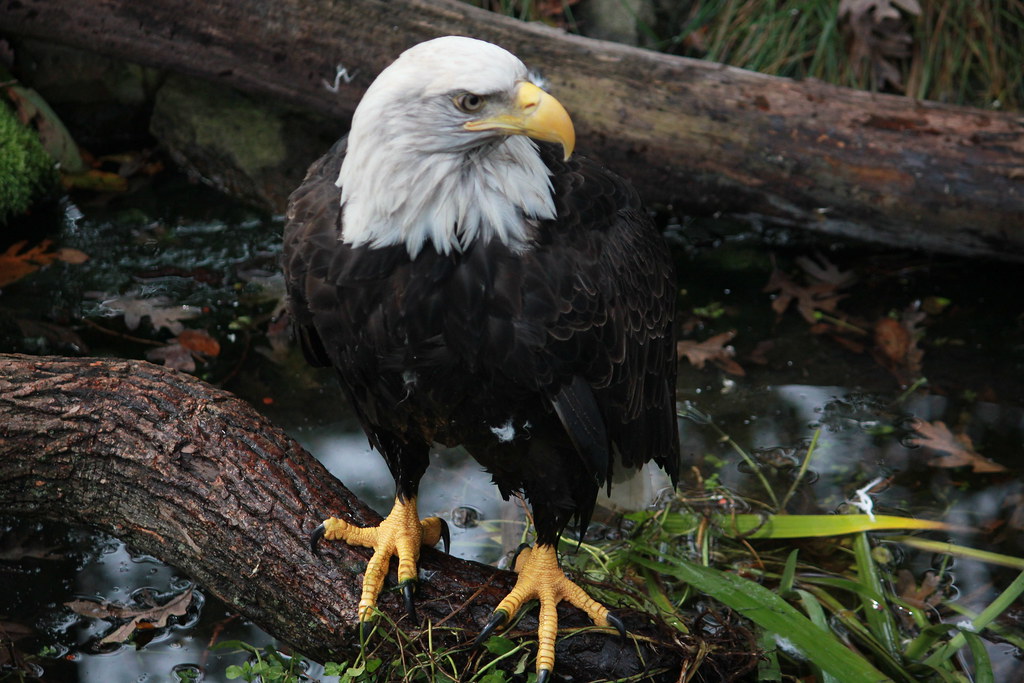
Despite their name, Bald Eagles (Haliaeetus leucocephalus) aren’t suffering from any feather loss condition. The name “bald” derives from an older meaning of the word that referred to “white-headed” rather than lacking feathers. Young Bald Eagles don’t develop their distinctive white head and tail feathers until they reach maturity at around four to five years of age. Before that, juveniles have predominantly brown plumage with mottled white patterns, making them easily mistaken for Golden Eagles by inexperienced observers. This dramatic transformation in appearance led early European settlers in North America to believe they were different species entirely. The scientific name further emphasizes this characteristic, as “leucocephalus” translates from Greek as “white head.”
Eagle Talons Are Stronger Than Human Hands
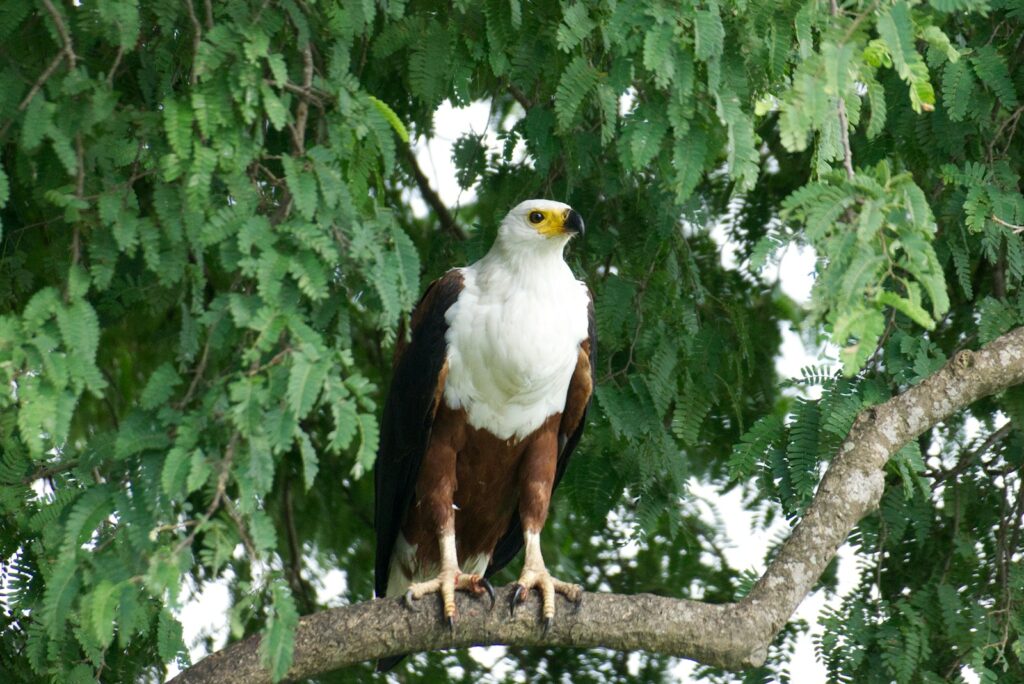
An eagle’s grip is truly formidable, with talon strength that can exceed 400 pounds per square inch (psi) in some species. This crushing power is approximately ten times stronger than the average human hand grip and allows eagles to carry prey weighing up to their own body weight. Their feet are equipped with specially adapted tendons that lock in place once they’ve grabbed prey, requiring minimal muscle exertion to maintain their powerful grip. This locking mechanism enables eagles to carry heavy prey over long distances without tiring. The Harpy Eagle, native to Central and South American rainforests, possesses talons comparable in size to grizzly bear claws (measuring up to 5 inches long) and can exert enough force to instantly crush the bones of sloths and monkeys, their primary prey.
Eagles Build The Largest Nests Of Any Bird
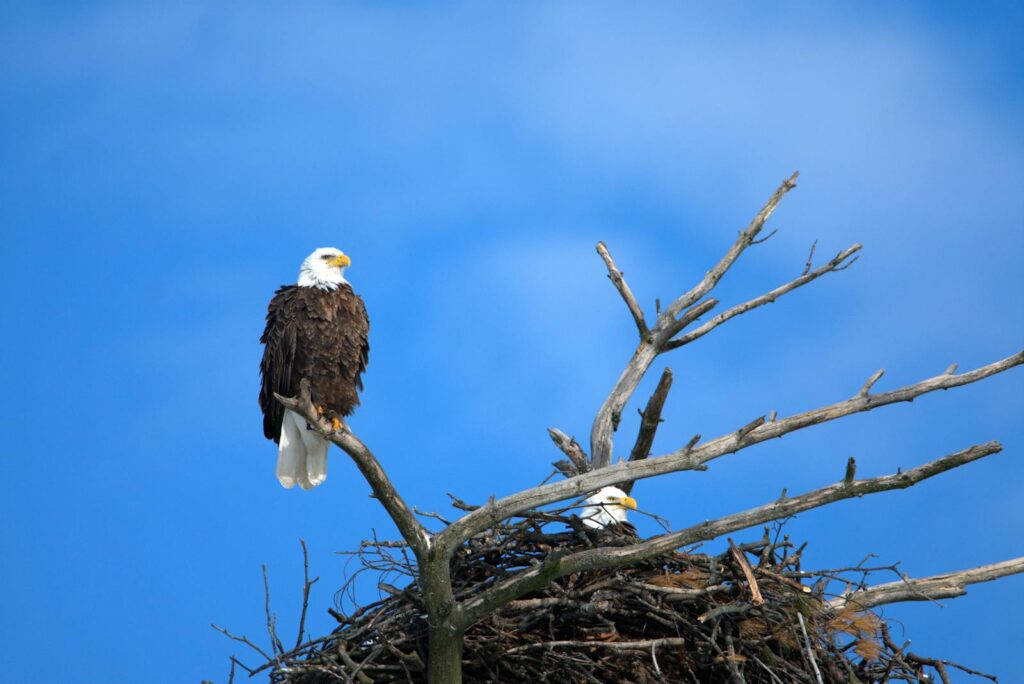
Eagles are remarkable architects, constructing some of the most impressive structures in the animal kingdom. Bald Eagles hold the record for the largest bird nest ever documented, with one nest in St. Petersburg, Florida, measuring 9.5 feet in diameter, 20 feet deep, and weighing over two tons. Eagles typically reuse and add to their nests year after year, which explains how they can reach such monumental proportions over time. These massive nests, called eyries, are built high in tall trees or on cliff edges to provide protection from predators and a good vantage point for hunting. The interior of an eagle’s nest is often lined with softer materials like moss, grass, and downy feathers to create a comfortable environment for their eggs and chicks.
Eagles Mate For Life With Spectacular Aerial Courtship
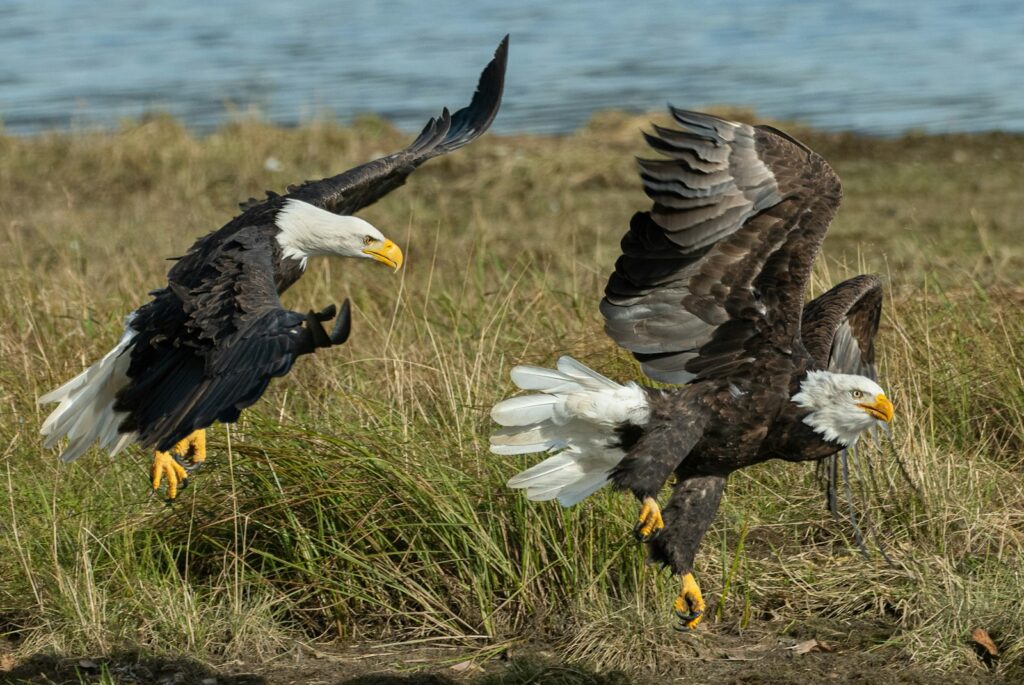
Most eagle species practice monogamy and form pair bonds that last for life, though they will find new mates if their partner dies. Their courtship rituals are among the most spectacular in the bird world, featuring breathtaking aerial displays where pairs lock talons in mid-air and spin toward the ground in a death-defying spiral called a “cartwheel display.” This dangerous ritual demonstrates fitness and trust between potential mates, as they must release their grip before hitting the ground. After pairing, eagles work together to build nests, incubate eggs, and raise their young, with both parents taking turns hunting and caring for eaglets. Their strong pair bonds are reinforced through regular displays and specific vocalizations that help strengthen their connection throughout their lives together.
Philippine Eagles Are Among The Most Endangered Birds
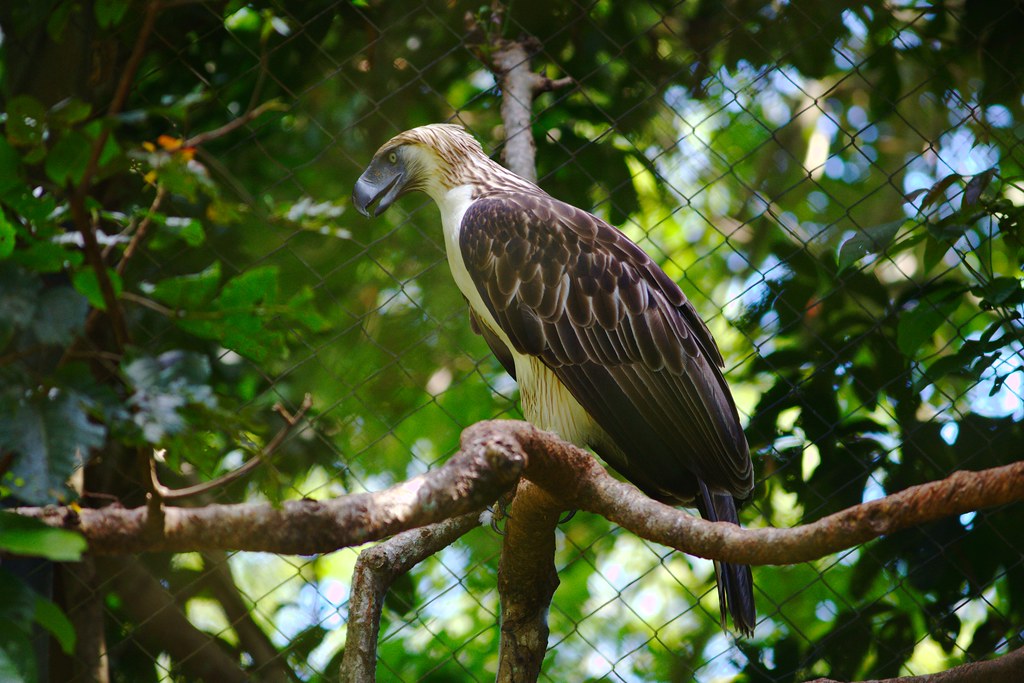
The Philippine Eagle (Pithecophaga jefferyi) is one of the rarest and largest eagles in the world, with fewer than 400 breeding pairs remaining in the wild. These magnificent birds have a wingspan reaching up to 7 feet and are the national bird of the Philippines, where they face critical habitat loss due to deforestation. Each breeding pair requires approximately 25-50 square miles of territory to successfully hunt and raise young, making conservation particularly challenging as human populations expand into their forest habitats. Philippine Eagles are also unique in their reproductive rate, producing only one egg every two years, which further complicates recovery efforts for the species. Their striking appearance, with a shaggy crest that resembles a lion’s mane, has earned them the nickname “monkey-eating eagle,” though their diet actually includes a variety of forest mammals, birds, and reptiles.
Eagles Have Special Adaptations For Hunting Fish
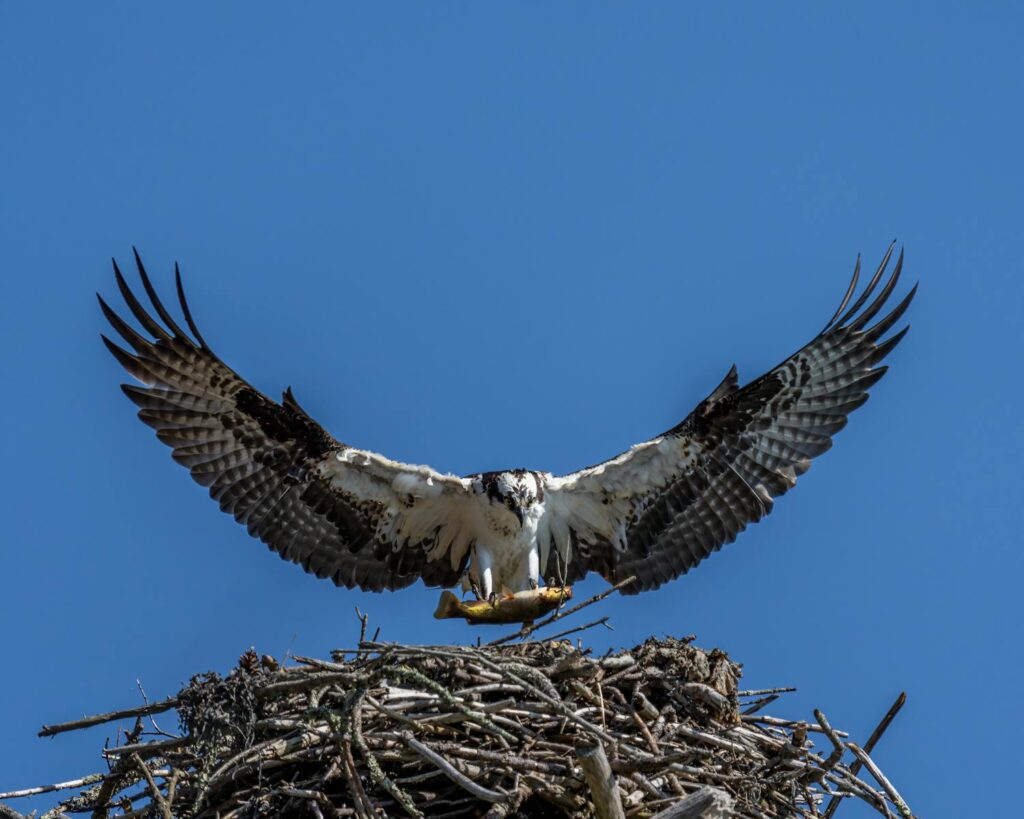
Fish-eating eagles like the Bald Eagle and African Fish Eagle possess specialized adaptations that make them incredibly efficient aquatic hunters. Their feet have small spikes called spicules on the undersides of their toes that help them grip slippery fish, along with specialized scales that point backward to further prevent prey from escaping. Unlike many birds, fishing eagles can close their nostrils while diving into water, preventing water from entering their respiratory system during hunting plunges. Their excellent vision can penetrate water surfaces, allowing them to spot fish swimming below, and they can precisely calculate refraction angles to account for how water bends light and affects the apparent position of their prey. These combined adaptations make them among the most successful fishing predators in the animal kingdom.
Golden Eagles Can Take Down Large Prey
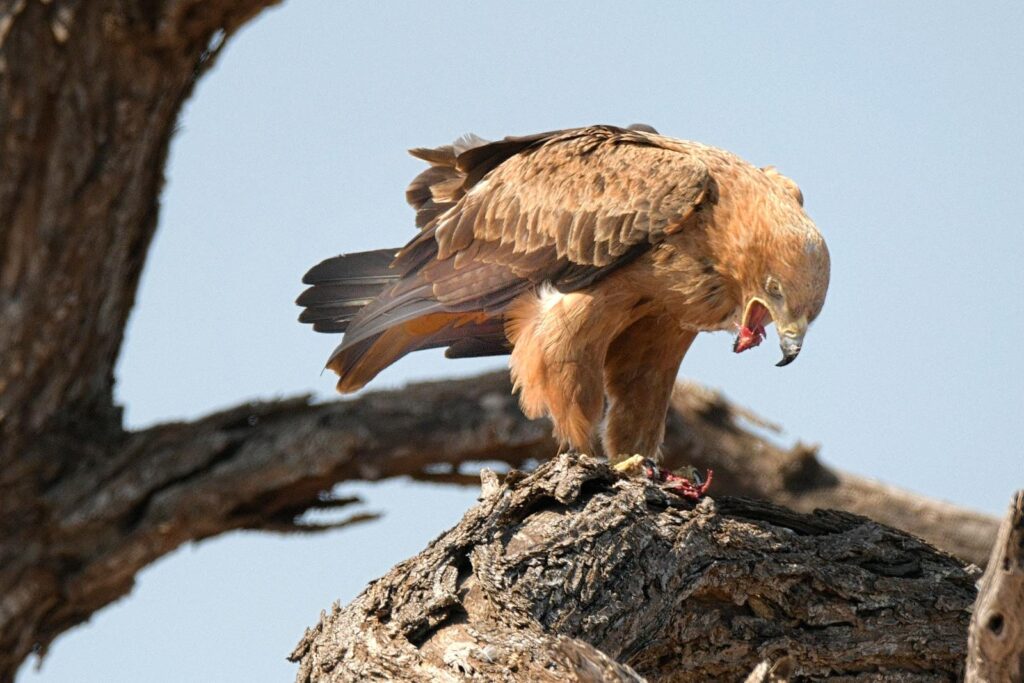
Golden Eagles are formidable predators capable of hunting animals much larger than themselves, including deer fawns, small sheep, and mountain goats. Their hunting technique for large prey involves a strategic approach where they dive at high speeds and strike with their talons to cause critical injuries, often targeting the spine or head to immobilize the animal. There are documented cases of Golden Eagles in Central Asia being trained by human hunters to take down wolves, showcasing their remarkable predatory capabilities. Their powerful wings allow them to carry prey weighing up to 15 pounds in flight, though they can drag larger animals along the ground after making a kill. Unlike many predators, Golden Eagles can see in the ultraviolet spectrum, which helps them track prey by detecting urine trails that reflect UV light.
Eagle Feathers Have Special Legal Protection

In the United States, eagle feathers are afforded unique legal protection that makes it illegal for most citizens to possess them under the Bald and Golden Eagle Protection Act of 1940. The only exception to this law allows members of federally recognized Native American tribes to possess eagle feathers for religious and cultural purposes, reflecting the bird’s sacred status in many indigenous traditions. The U.S. Fish and Wildlife Service operates the National Eagle Repository, which collects eagles that have died from natural causes and distributes their feathers and parts to Native Americans who have applied for them, often resulting in waiting periods of several years due to high demand. This legal protection extends beyond live birds to include any part, nest, or egg, making eagle feathers among the most strictly regulated animal parts in American law.
Eagles Have Remarkable Lifespans

In the wild, eagles are among the longest-living bird species, with Bald Eagles typically surviving 20-30 years, though some individuals have lived past 40 in exceptional cases. Their longevity increases significantly in captivity, where they’re protected from natural threats, with the oldest documented captive Bald Eagle living to 50 years. This remarkable lifespan allows eagles to accumulate extensive hunting experience and knowledge of their territories, making older birds exceptionally efficient predators. Eagles’ long lives also contribute to their conservation challenges, as they reach sexual maturity relatively late (4-5 years for many species) and typically produce small numbers of offspring each breeding season. This reproductive strategy works well for long-lived species under natural conditions but makes eagle populations particularly vulnerable to human-caused mortality factors like habitat loss, poisoning, and collisions with power lines.
Eagle Population Recovery Is A Conservation Success Story
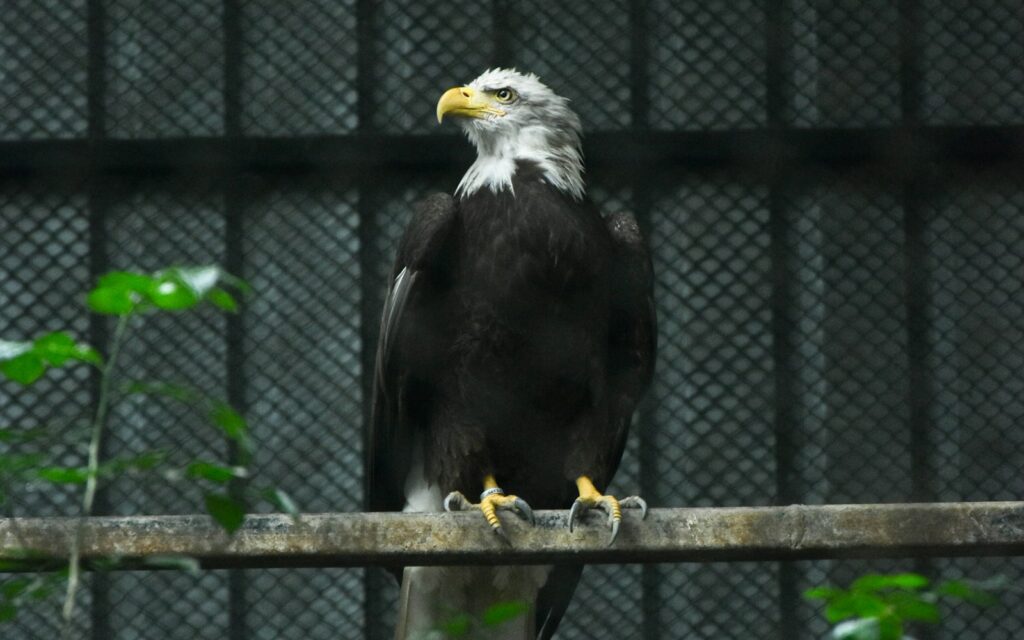
The resurgence of Bald Eagle populations in North America represents one of wildlife conservation’s greatest success stories. In the 1960s, Bald Eagles were on the brink of extinction in the contiguous United States, with fewer than 500 nesting pairs remaining due primarily to DDT pesticide poisoning, which caused their eggshells to thin and break during incubation. Following the ban of DDT in 1972 and protection under the Endangered Species Act, their populations have rebounded dramatically, with current estimates exceeding 300,000 individuals and approximately 70,000 breeding pairs. This remarkable recovery demonstrates the resilience of nature when harmful practices are addressed through evidence-based conservation policies. The Bald Eagle’s journey from the edge of extinction to abundance provides hope for other endangered species and highlights the positive impact that dedicated conservation efforts can achieve when supported by effective legislation and public awareness.
Eagles represent nature at its most magnificent—powerful, adaptable, and awe-inspiring. These remarkable birds have evolved extraordinary capabilities that help them thrive as apex predators in diverse habitats across the globe. From their unparalleled vision and hunting prowess to their impressive nesting behaviors and devoted parenting, eagles demonstrate natural engineering at its finest. While many eagle species still face significant conservation challenges from habitat loss, pollution, and climate change, successful recovery efforts for birds like the Bald Eagle show that dedicated protection can reverse declining populations. By understanding and appreciating these fascinating facts about eagles, we gain not only scientific knowledge but also deeper respect for these magnificent birds that have symbolized power, freedom, and transcendence throughout human history.
